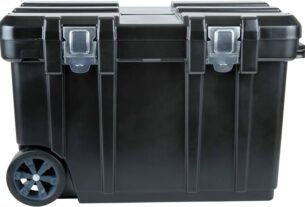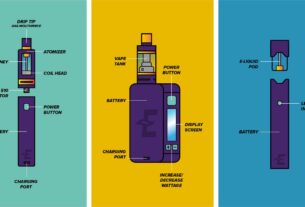Are you a hunter, trapper, or just someone who loves leather goods? If so, then hide tanning is something you should consider. However, the process can be quite daunting if you don’t have the right tools. That’s why we’ve created this ultimate guide to hide tanning tools. In this article, we’ll cover everything from the basics of hide tanning to the tools you need to do it right.
H2: The Basics of Hide Tanning
Before we dive into the different tools you need for hide tanning, let’s first discuss what hide tanning is and why it’s important.
Hide tanning is the process of turning animal hides into leather. It’s an age-old craft that has been used for centuries by different cultures around the world. The process involves removing the hair and flesh from the hide, soaking it in a solution to remove any remaining flesh and fat, and then treating it with chemicals to preserve it.
Why is hide tanning important? For starters, it allows us to make use of all parts of an animal after hunting or trapping. It also provides us with durable and long-lasting materials for making clothing, bags, shoes, and other leather goods.
H2: The Tools You Need for Hide Tanning
Now that you know what hide tanning is and its importance let’s go through some of the essential tools required for successful hide tanning:
1. Fleshing Knife
The first tool you’ll need is a fleshing knife. This tool is used to remove any remaining flesh from the hide after skinning. A good fleshing knife will have a sharp blade and be easy to handle.
2. Scraping Tool
Once you’ve removed all the flesh from your hide, you’ll need a scraping tool to scrape off any remaining fat or tissue. A good scraping tool will have a curved blade and be made from sturdy materials.
3. Tanning Solution
After you’ve removed all the flesh and fat, you’ll need to soak your hide in a tanning solution. There are different types of tanning solutions available, including vegetable tannins, mineral tannins, and synthetic tannins. Each type has its own advantages, so it’s up to you to choose the one that best suits your needs.
4. pH Strips
To ensure that your tanning solution is at the right pH level, you’ll need pH strips. These strips will help you determine whether your solution is too acidic or too alkaline. The ideal pH range for most tanning solutions is between 3.5 and 4.5.
5. Leather Punch
Once your hide is tanned and dried, you’ll need a leather punch to make holes in it for stitching or lacing. A good leather punch should be easy to handle and have interchangeable heads for different sizes of holes.
6. Leather Dye
If you want to add color to your leather goods, you’ll need some leather dye. There are many different types of leather dye available on the market, including oil-based dyes and water-based dyes. Choose the one that works best for your project.
7. Leather Conditioner
Finally, once your leather goods are complete, you’ll need some leather conditioner to keep them supple and prevent them from cracking over time. A good leather conditioner should be easy to apply and provide long-lasting protection.
H2: Tips for Successful Hide Tanning
Now that you know what tools you need for hide tanning let’s go through some tips to ensure success:
1. Clean Your Tools
Before starting any hide tanning project, make sure all your tools are clean and free of debris or rust. This will help ensure that they work properly and don’t damage your hide.
2. Use High-Quality Materials
Invest in high-quality materials, such as a sharp fleshing knife and sturdy scraping tool. This will help ensure that you get the best results possible and that your tools last for many years to come.
3. Follow Instructions Carefully
When using tanning solutions or leather dyes, be sure to read the instructions carefully before applying them. Improper use can result in poor-quality leather or even damage to your hide.
4. Be Patient
Hide tanning is a time-consuming process that requires patience and attention to detail. Don’t rush through any of the steps; take your time and make sure you do everything correctly.
H2: Conclusion
Hide tanning is an ancient craft that has been passed down through generations of hunters, trappers, and craftsmen around the world. With the right tools and some patience, anyone can turn animal hides into beautiful, long-lasting leather goods. If you’re interested in trying your hand at hide tanning, start by investing in some high-quality tools and following our tips for success.
Wiki Reference:
https://en.wikipedia.org/wiki/Leather
https://www.instructables.com/How-to-Tan-Hide-at-Home/
https://www.tandyleather.com/en/techniques-tips/hide-tanning-made-simple




